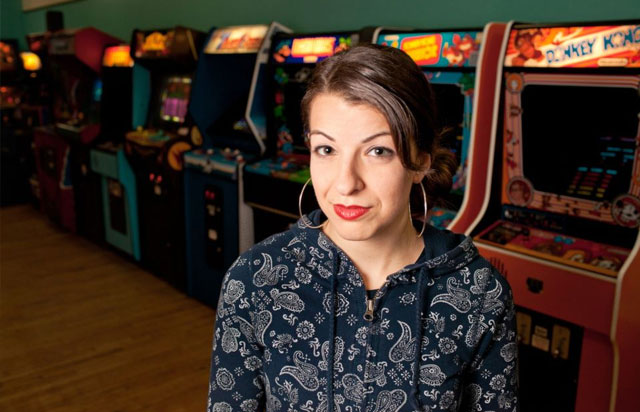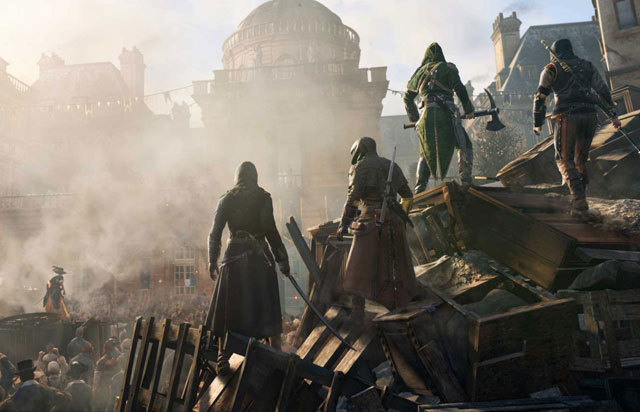If you’ve been even vaguely invested in the gaming community over the last several years, you may have noticed an increasing number of conversations taking place about the relationships between women and games. There’s been a lot going on recently to raise hackles amongst the righteous of the gaming world, and raised indeed they are. With the short lived ‘male only’ Hearthstone tournament, Giant Bomb’s recent hiring choices leaving many lamenting the lack of diversity, and Ubisoft’s almost laughable attempt to justify its stubbly-white-dude creative choices being just the most recent in a lengthy line of events to cause a stir, it’s clear there’s a lot left to be desired when it comes to gender equality in gaming. Unsurprisingly, people are getting very tired of it.
So what’s the big deal about the way we’re treating women as gamers? It’s undoubtedly a complicated issue, but it’s important to remember that women statistically matter. If you subscribe to the notion that games should only have to cater to their ‘core audience’ of dudes, and anything that offends or belittles women can be justified because they aren’t meant to see it (that in itself is a problematic view, but for another article), then let me set you straight.
According to the Entertainment Software Association, 45% of (US) gamers are women, and women aged 18 or older represent a significantly greater portion of the game-playing population (36%) than boys aged 18 or younger (17%). That’s a lot of ladies getting their game on – nearly half of a given audience. “But mobile games! They’re not real gamers!” pipes a voice in the distance. Hush now. Gamers are gamers, and to quote Jason Allaire (associate professor of psychology at North Carolina State University and co-director of the gains through gaming lab):
“There is no longer a ‘stereotype game player,’ but instead a game player could be your grandparent, your boss, or even your professor.”
Whether you believe that they’re there or not, there are plenty of women invested in the mainstream gaming scene. More than that, we’re making ourselves heard. But how many people are listening?
Women as characters
It’s worth starting the investigation right at the core – before we even look at real, living women and the way they’re treated by other game playing human beings, look at how women are represented in the games themselves.
There’s a term often thrown around when you bring up female game protagonists, and that’s “risk.” Risk that they won’t be as appealing to the “core audience,” and that those games won’t sell as well. But the success of titles such as Bioshock Infinite, Tomb Raider, The Last Of Us, or Mirror’s Edge show clearly that games aren’t branded with an instant death sentence when you add a hefty female presence.
The same is true when you look outside AAA titles, with offerings such as Transistor or Child of Light, both recently receiving attention. Heck, even Mass Effect shows us that just the option to play as a woman if you so desire is enough. But the games without women vastly outweigh those with – and your choices slim down even further if you’re looking for a non-white female playable character. So why are games with female protagonists such relatively rare creatures? While Ubisoft (Assassin’s Creed Unity) may have come under heavy fire for giving such a disputable reasoning for lacking female characters, they certainly aren’t the only company cutting them out or passing them over.
Let’s talk reality and risk. Women are an increasingly large chunk of major game consumption, and while adding a female presence probably won’t cause core fans to spontaneously explode from horror, consistently avoiding doing so certainly speaks volumes about what you think of anyone outside that audience.
If any of your arguments against the way women are portrayed in games hinge on the theme of “realism,” let me stop you there. If I can take 400 bullets and still drop and roll from a cliff, carry 82 health potions in the pockets of my non-existent bag, and any number of other fantastical things, you can’t really draw the realism line under “women.” Gaming allows a whole new realm of creativity, and if you think a woman realistically can’t be a part of that, I don’t care much for your reality. Spending any time at all on the internet will confirm that I’m certainly not the only one. While we can’t blame Unity for the entire deficit, what we can learn from the backlash it prompted is that the tolerance for excuses is wearing very thin indeed.
Women as creators
It must seem fairly obvious to most. A good way to improve female representation in games would be to have more women involved in the design and development process. In fact, a common retort to criticism of the games industry is “if you want those games, you make them!” Representation in the games industry though remains remarkably poor, with a recent IGDA survey showing that only 22% of the games industry workforce are women. While as a standalone statistic that sounds disappointingly meagre, it’s actually double the number from a previous 2009 survey. Even though it may still feel like a boys’ club, hats off to the increasing number of women wedging a foot in the door.
However much resistance to change there is from the inside, the outside doesn’t seem much more welcoming. The community responses to works such as Feminist Frequency raise some serious questions about the safety of women attempting to join the conversation. If you somehow missed the internet tirade that followed the kickstarter, take a quick look at Anita Sarkeesian’s TED talk.
Whether you agree with her work, her methods, or not, clearly the backlash was wildly out of control. What about making a video series talking about women in games warrants such a vitriolic response? Apparently, being a woman yourself. And she’s not–the–only–one–either.

Anita Sarkeesian received an unbelievable hate campaign in response to her fairly tame works on games and feminism. Image from Feminist Frequency facebook page.
Women as community
While it may not run things from the top, there’s no denying that the gaming community is both involved and influential. Unfortunately, it can be a struggle to fit into it if you’re open about not being a dude. To make it a little easier maybe we can all, here together, make an agreement – making a woman prove herself as a gamer is not your call. Governing what she can or cannot do as a gamer is not your call. What matters is that she enjoys games and wants to share that experience with others (and it would be great if the community was just pretty cool with it).
Despite setbacks and opposition, there is a strong push from the community for change. Even knowing full well what kind of backlash can await these endeavours, initiatives such as game camps for girls and workshops for women are being set up.
Communities of designers, devs, journalists, and content creators are vocally and publicly supporting one another through their trials. With the help of crowd-funding, more and more media is emerging to help shine a light on women in the gaming world. There may still be resistance, but there are opportunities growing to help women learn, connect, and support each other in the face of what can, at times, be an isolated industry. What they need now is vocal, reliable support from the rest of the gaming world. The opposition is loud – we have to be louder.
Joining the chorus
It can be difficult to know how to react when you start to see what’s happening around you. Often, a lack of a female character or someone harassing someone else on the internet makes no immediate impact on your life. Saying nothing might seem like the better option, but eventually the problem boils over. Once you know the wider reaching implications of what seems like one small act, you start to see patterns in the culture you’re otherwise proud of.
When you see it, it’s important to know that you can and should take part in the discussion. If the masses make noise and no one but the targets stand up, the progression we’re working on halts – and potentially we shut out people whose voices we really need to hear. Games industry veteran (and hero, as far as I’m concerned) Leigh Alexander recently wrote a guide to combating sexism online that, alongside some excellent advice, highlights the problem of the ‘not my business’ attitude:
“The silence of our friends is so much more painful than the noise of our enemies.”
While the situation may not yet be ideal, over the last decade we’ve certainly seen more prominent women emerging in the games industry, more outspoken fans clamouring for equality, and more attention being paid by developers and consumers alike. The journey clearly isn’t over, but the movement is snowballing and we have to keep the momentum up. Jennifer Allaway summed the situation up well at this year’s GDC, during her talk on Sexism and the Game Industry:
“The dialogue of the past few years has been working […] There is still much progress to be had, and it won’t end for a long time to come, but it is on the rise as this dialogue grows around us.”

Great article, that!